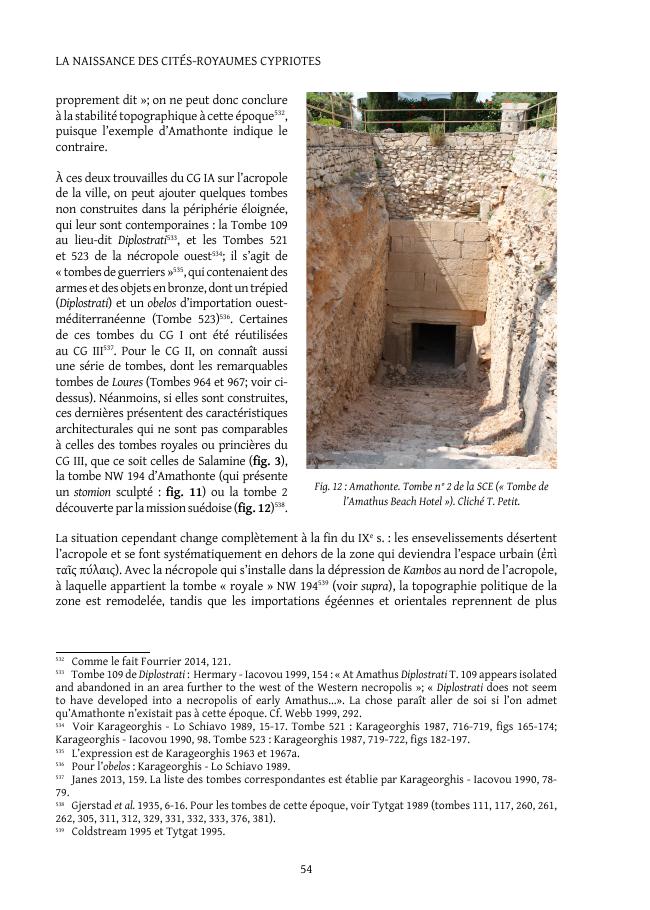La naissance des cités-royaumes cypriotes
126 p.
Three theories vie to explain the causes, characteristics and chronology behind the emergence of Iron Age Cypriot city-kingdoms: Achaean, Phoenician and autochthonous. Privileged by scholars until as recently as the 1980s, the first linked the emergence of the Cypriot city-state to the great Achaean migrations at the end of the second millennium. Epic foundation myths, telling of cities founded by Achaean heroes returning from Troy, were seen as fabled versions of events unfolding ostensibly at the outset of the Iron Age. The writings of D.W. Rupp cast doubt on the Achaean theory, by placing these developments at a much later date (8th c. BCE) and tracing their origins to the growing influence of the Phoenicians. This hypothesis was hotly contested, giving rise to a third theory, according to which the Cypriot Iron Age was essentially a continuation of the island's Bronze Age civilisation. The latter theory now holds sway and is scarcely ever contested. The Cypriot city-kingdoms that we observe in the histori
cal period (7th-4th c. BCE) are said to have arisen, after a few decades of instability, as early as the 11th century. Their political and administrative structures would have undergone little more than consolidation in the 8th century, before enjoying their floruit during the Archaic and Classical periods and finally disappearing amid the Wars of the Diadochi at the start of the Hellenistic period. By recasting these developments within the broader context of the re-emergence of state structures in the eastern Mediterranean, La naissance des cités-royaumes cypriotes reassesses the arguments advanced by champions of the received theory. It likewise situates the phenomenon within a firmer theoretical (i.e. anthropological) framework, intended to establish well-defined distinctions. Furthermore, it proposes a shared typology that can accommodate other political entities, traces of which are found throughout the Geometric period (11th-8th c. BCE). Not only does the archaeological evidence compel us to question.
whether events unfolded as suggested, it reinforces a more nuanced variant of the Phoenician theory. Various state markers, though abundant in the 8th century (Cypro-Geometric III), seem indeed conspicuously absent during Cypro-Geometric I and II. Excavations at one such city-state, the palace of Amathus, have yielded compelling indications as to when a lasting dynasty originally arose. From them, we can surmise that the Kingdom of Amathus was the first of its kind. While the process no doubt took several decades, under no circumstances did it occur before the 9th century BCE. This coincides, moreover, with the wave of resurgent state-building that swept the eastern Mediterranean and engulfed even more westerly regions like the Aegean. [Publisher's text].
-
Información



